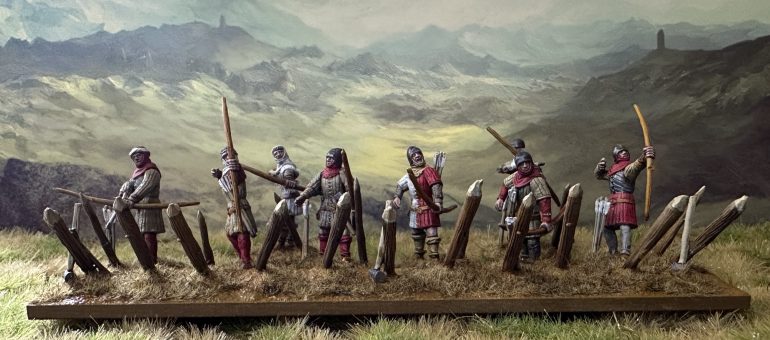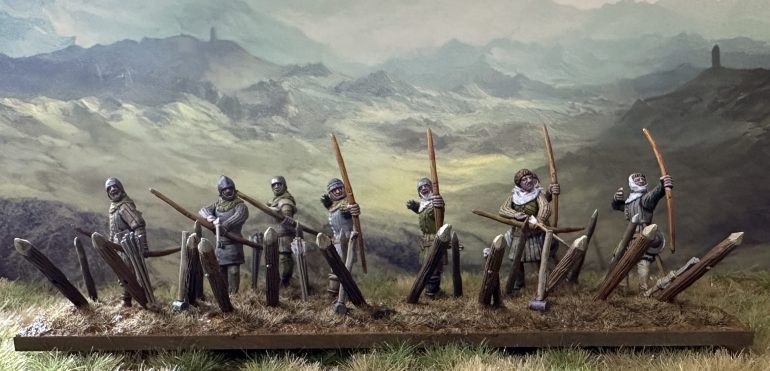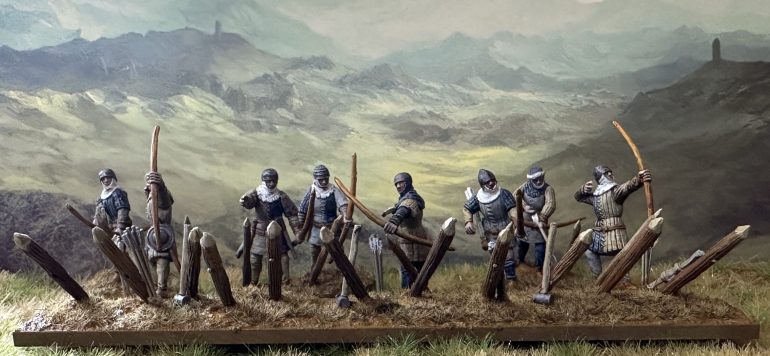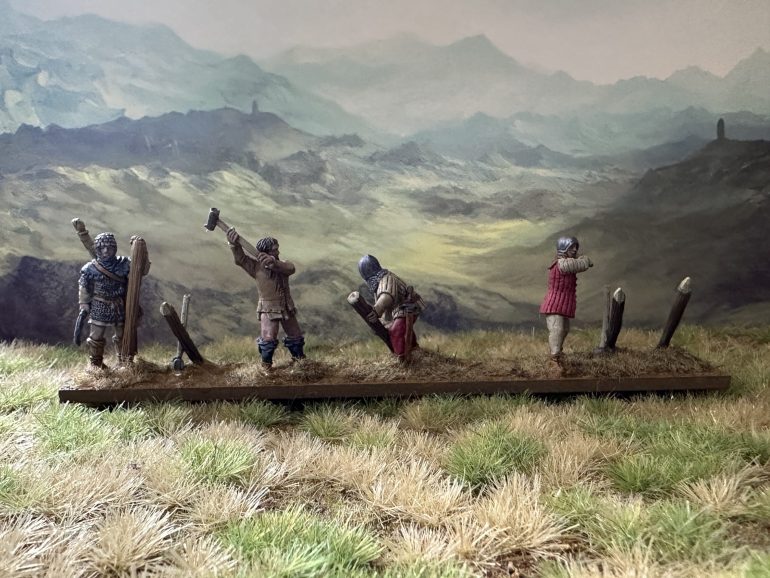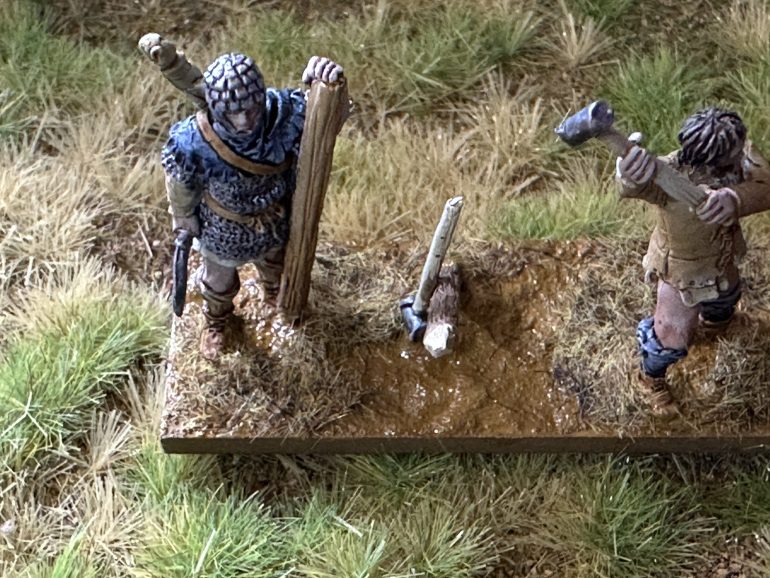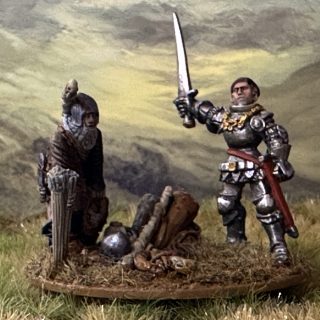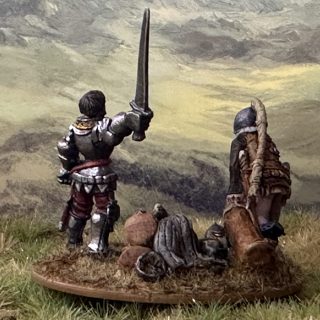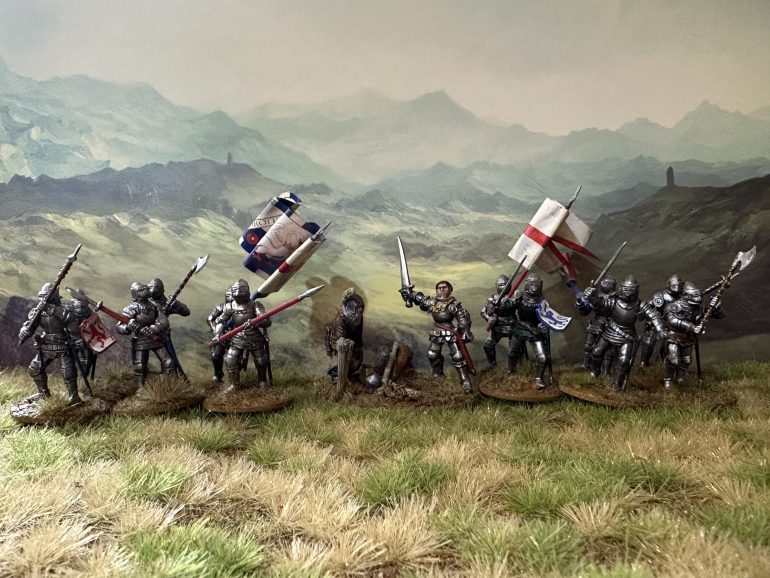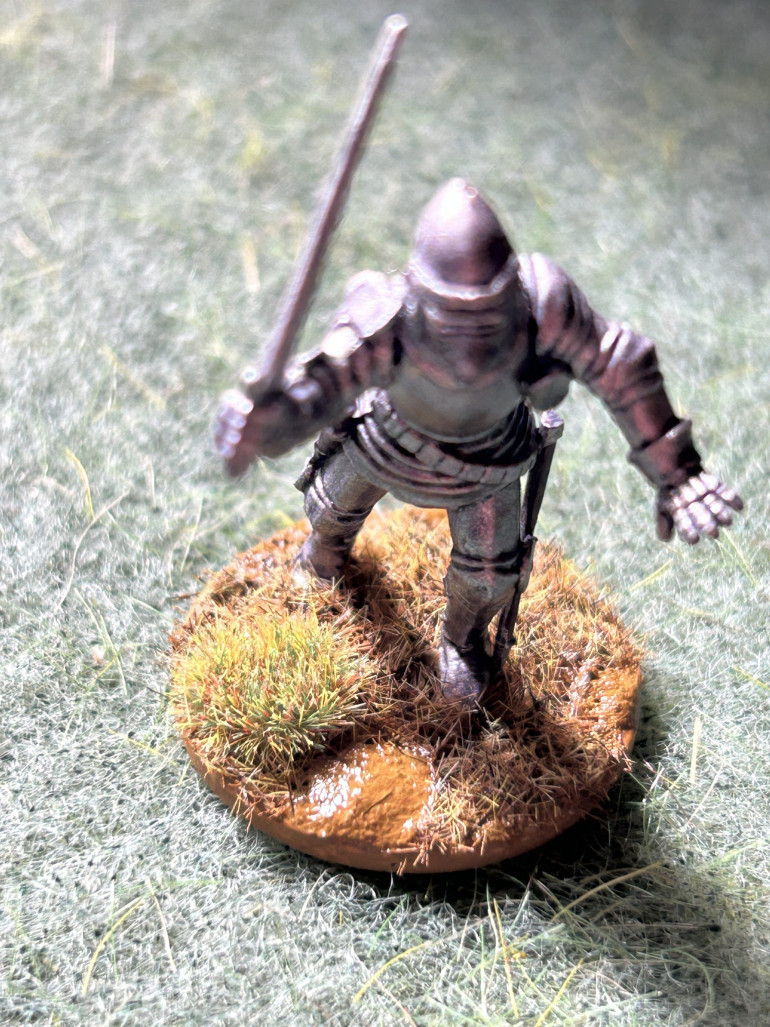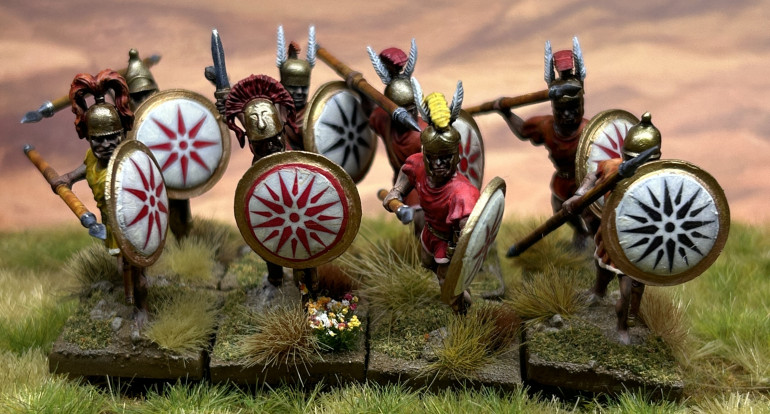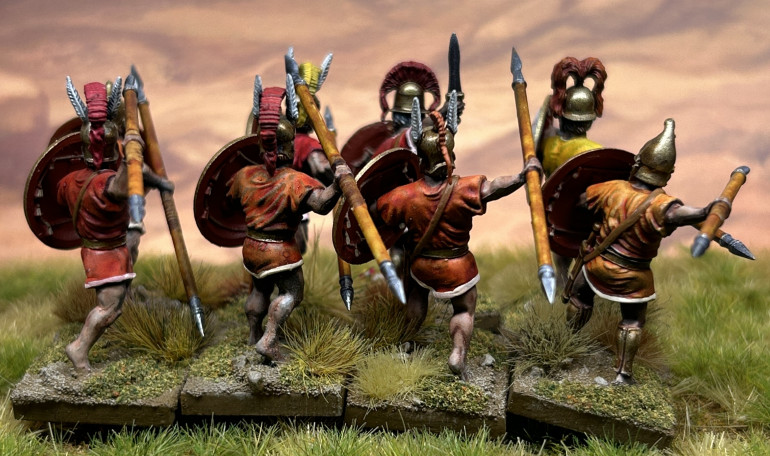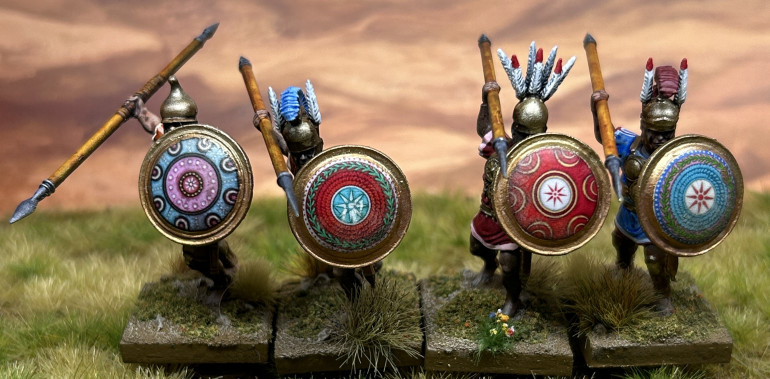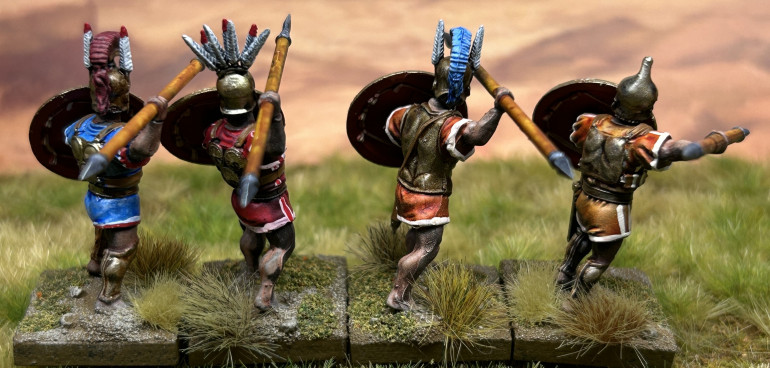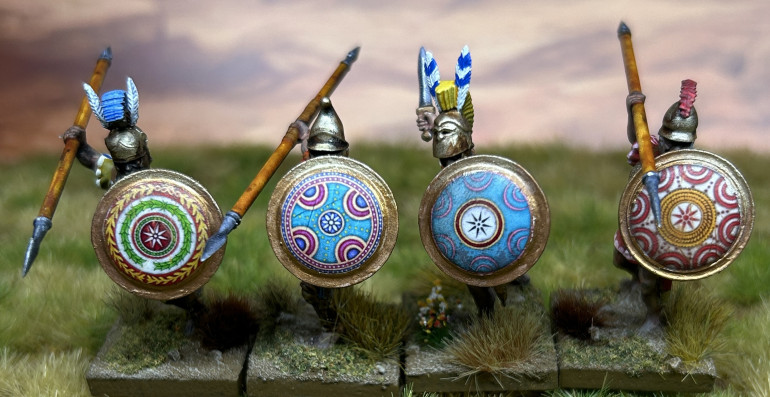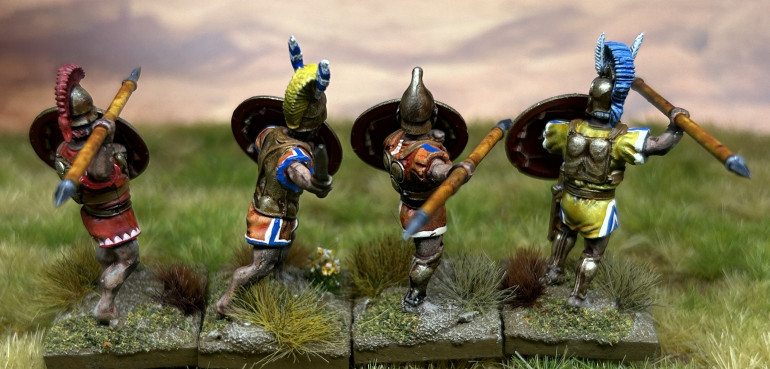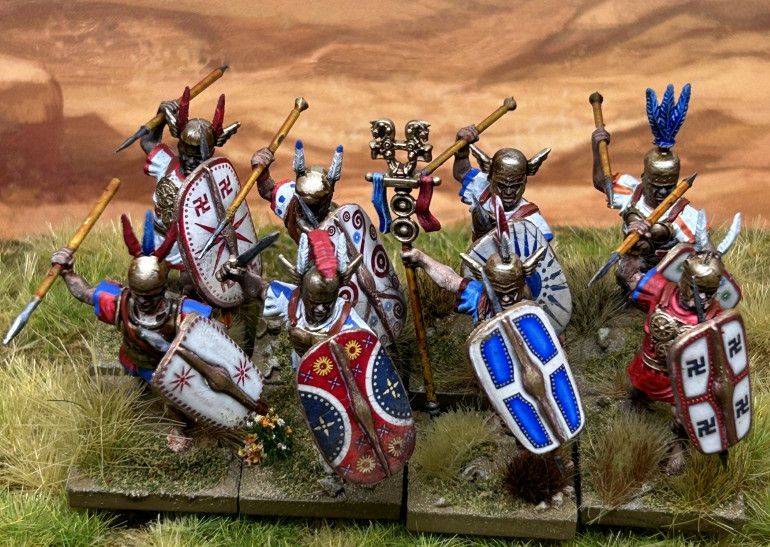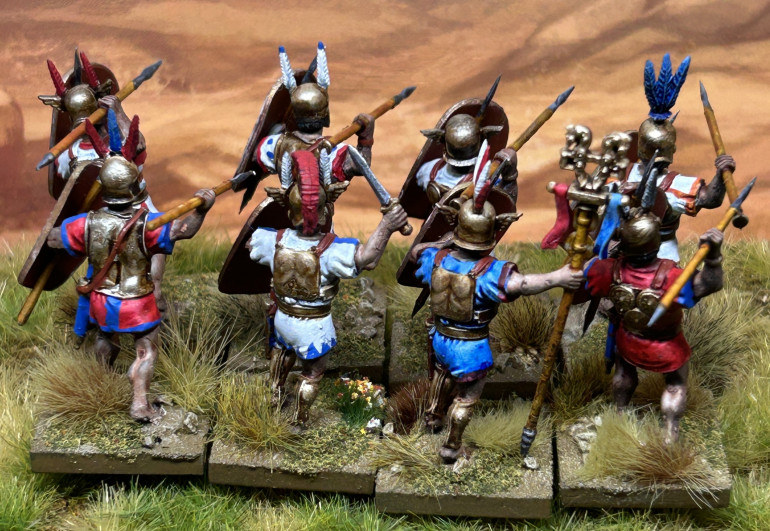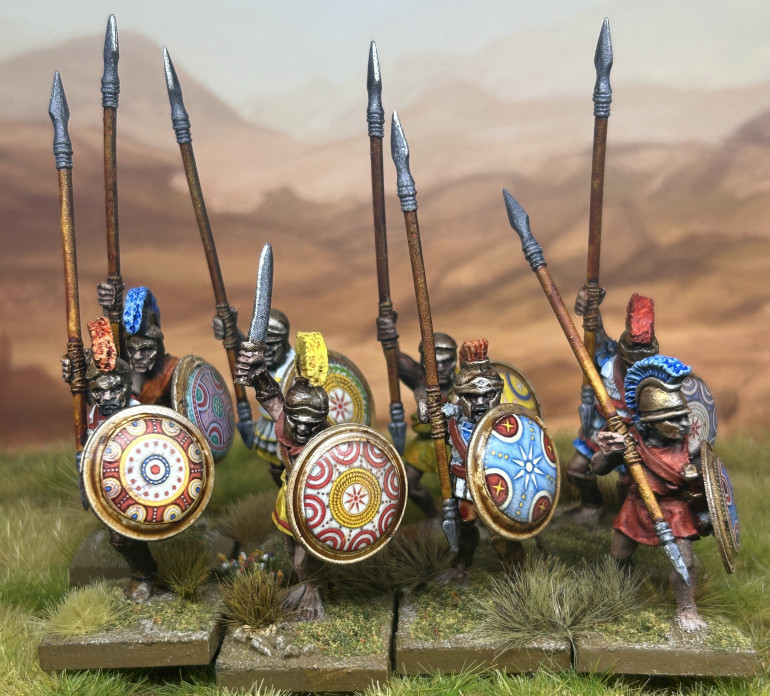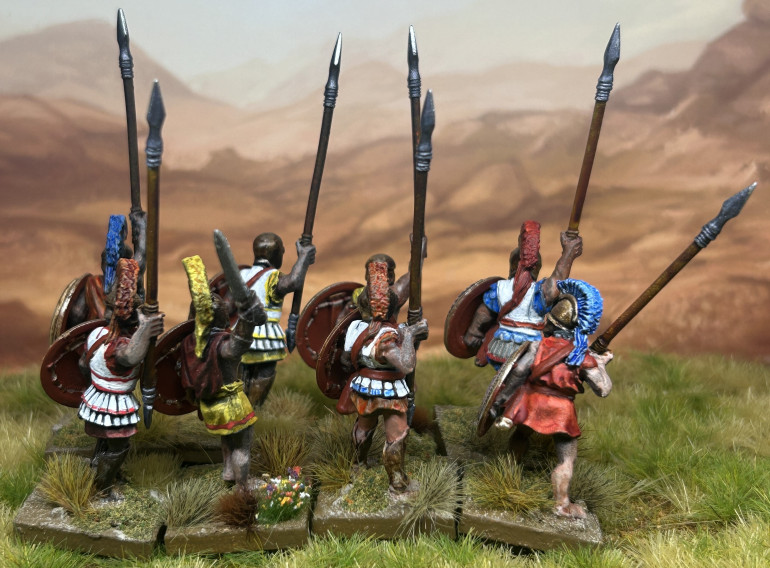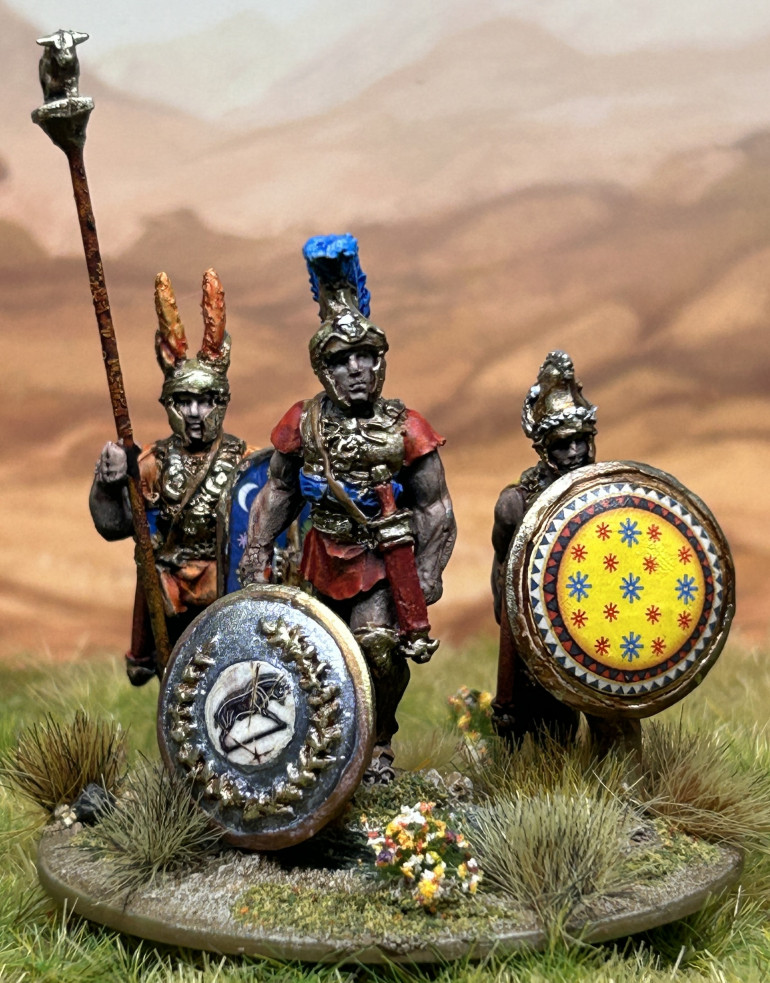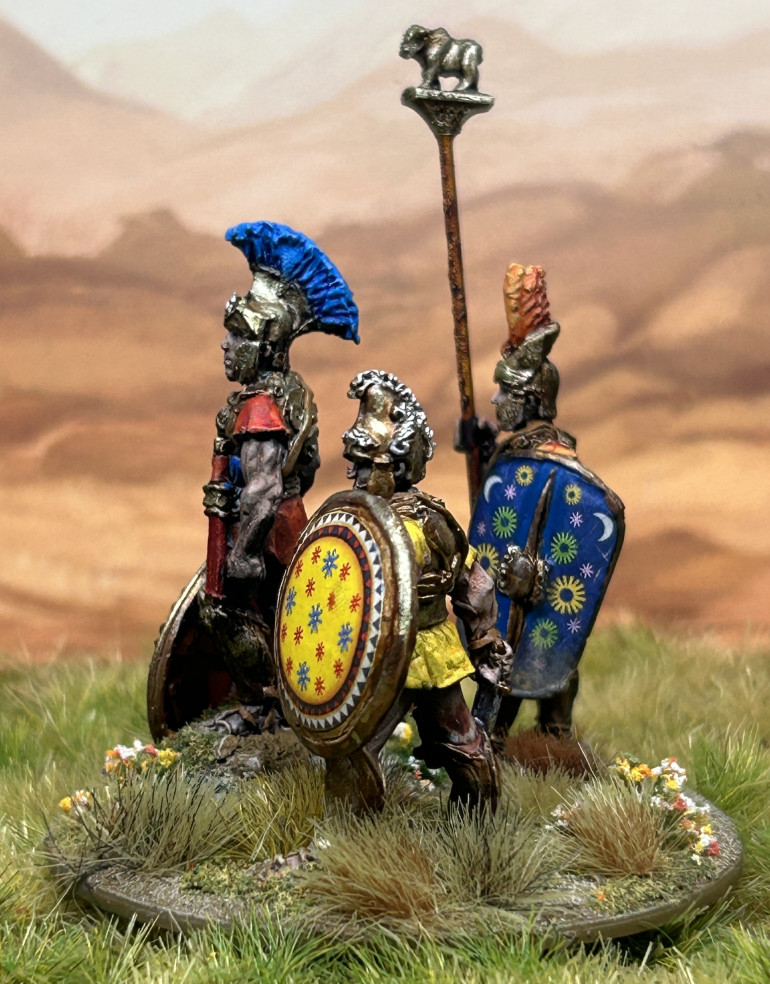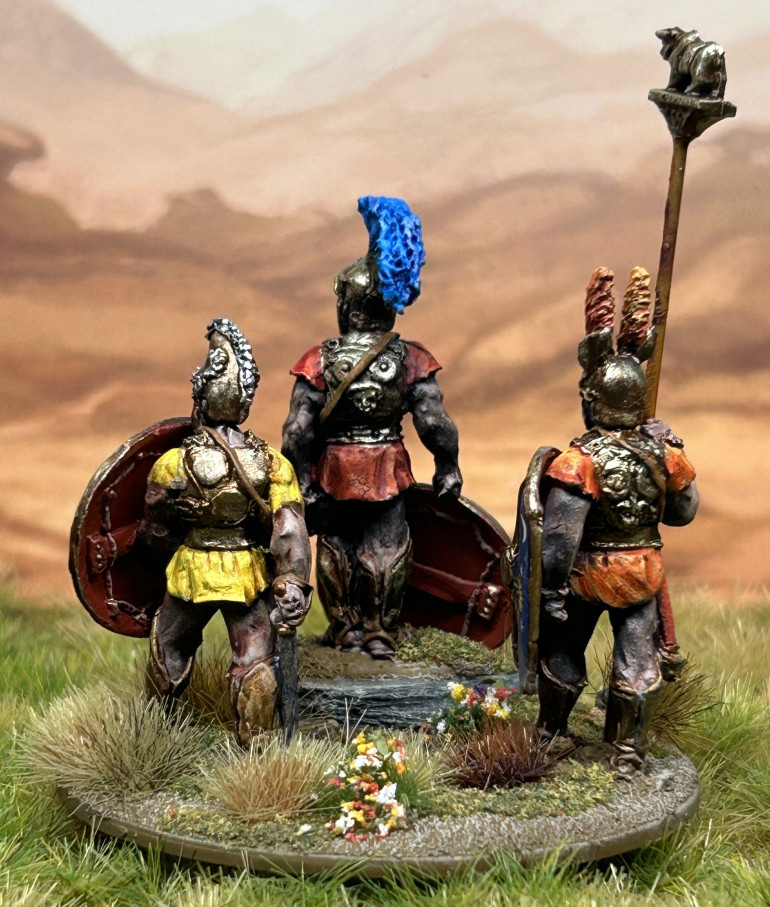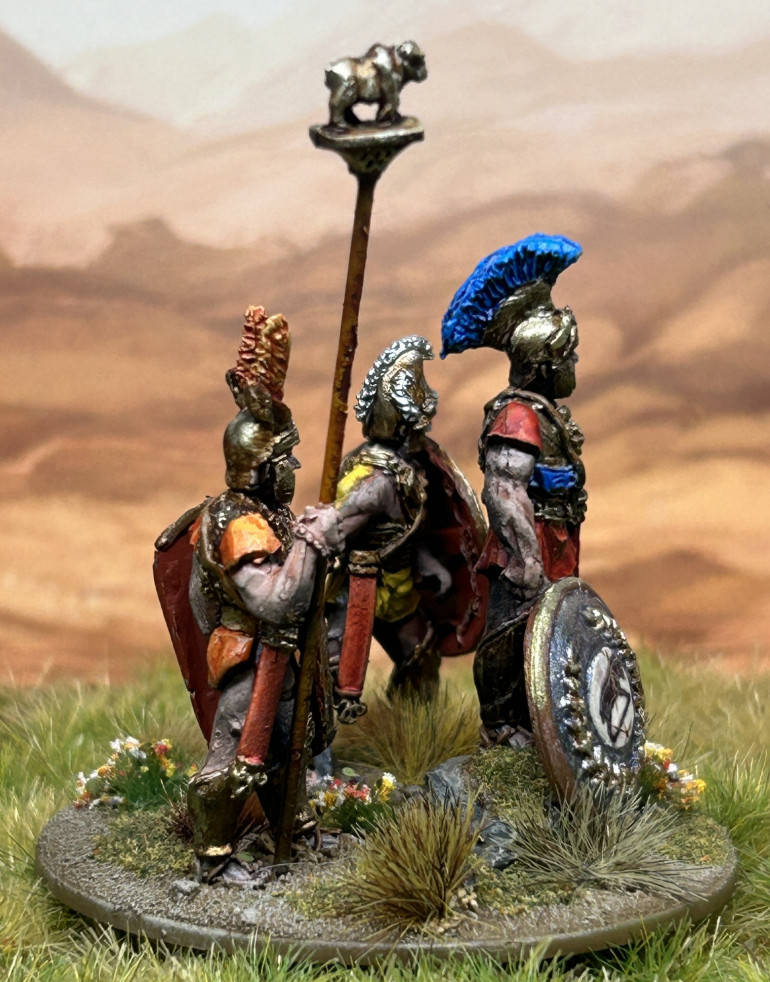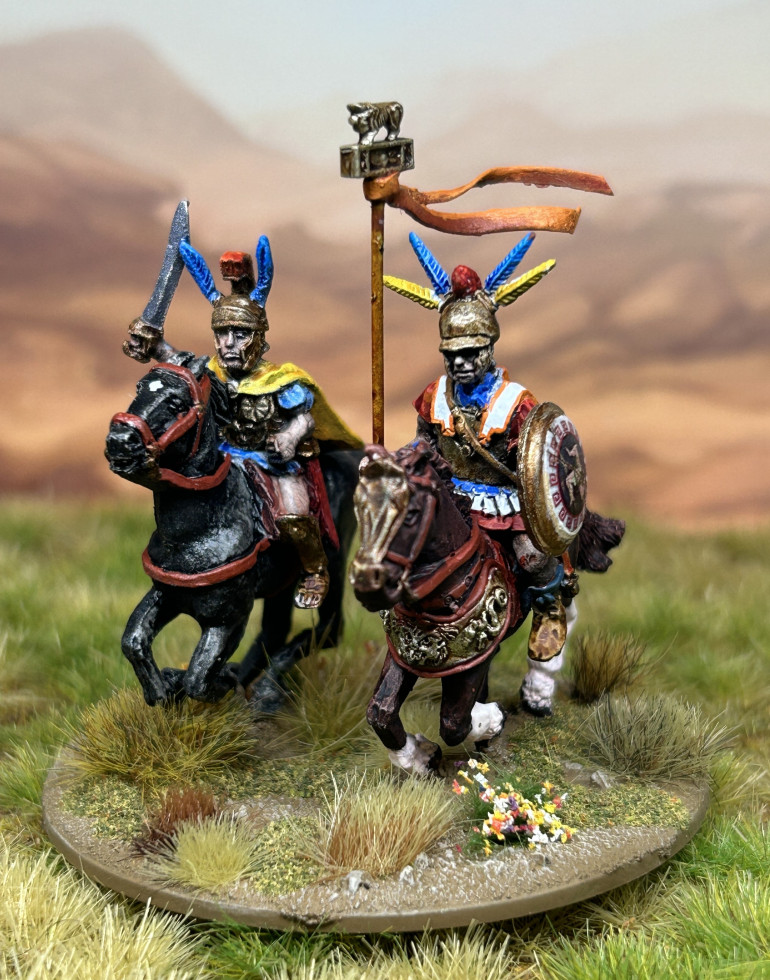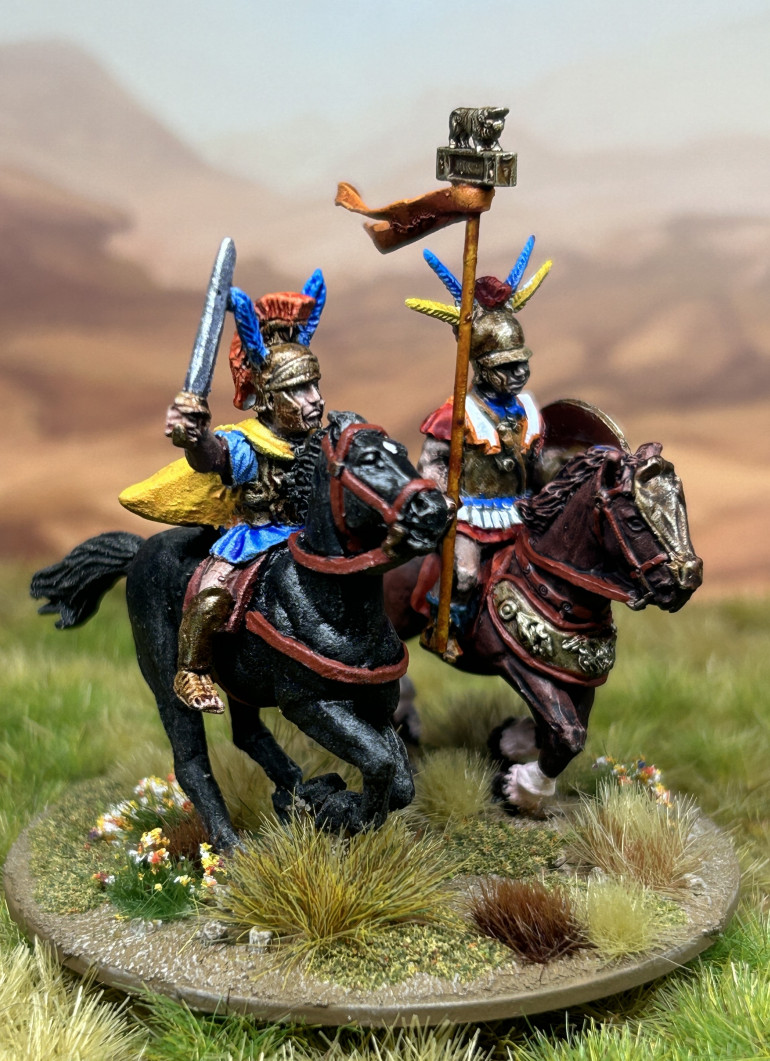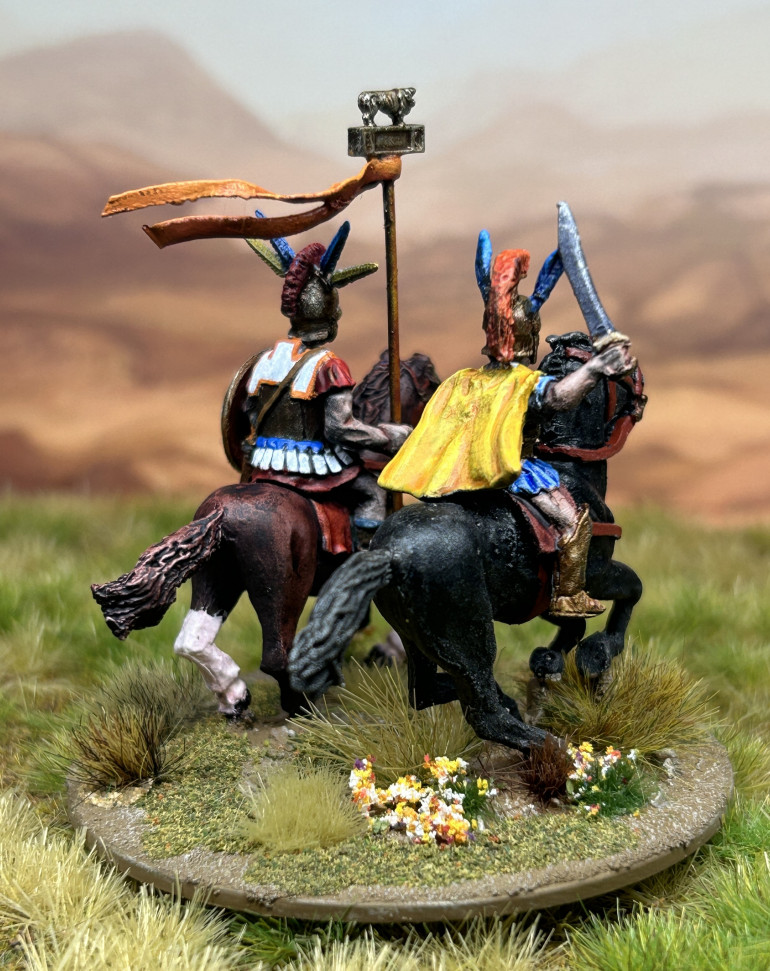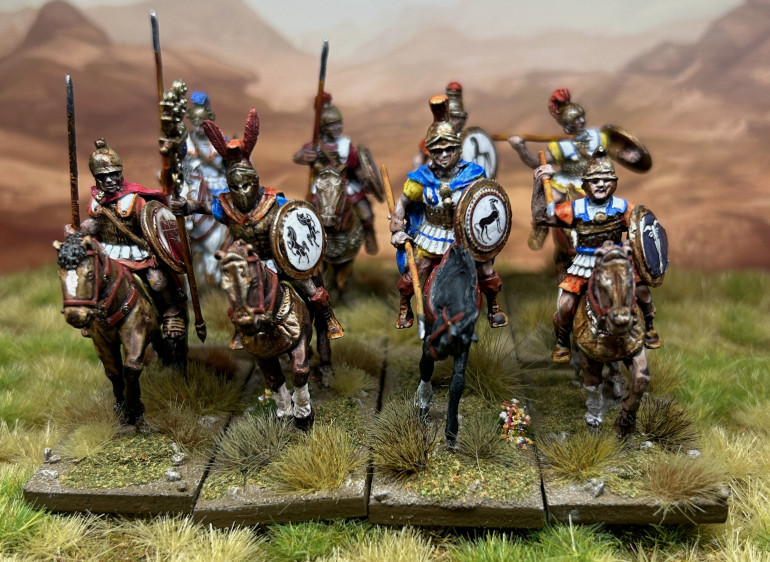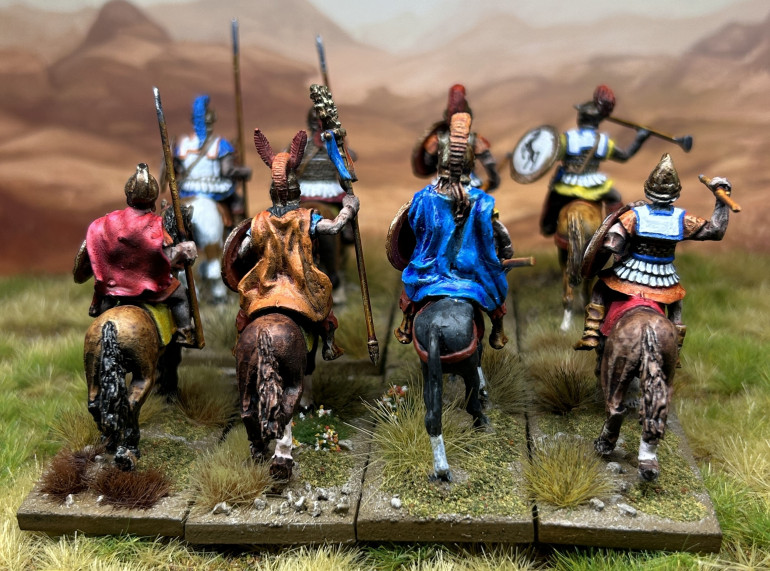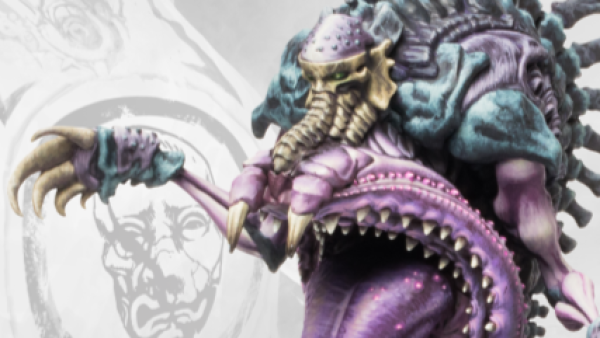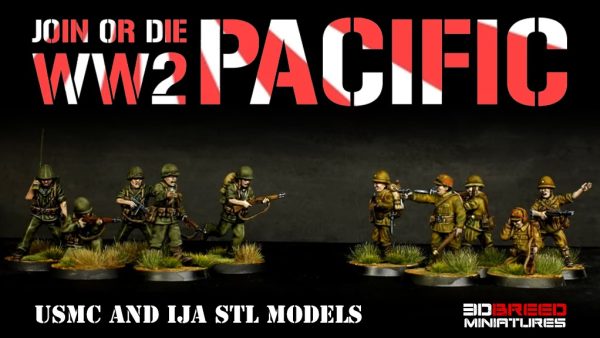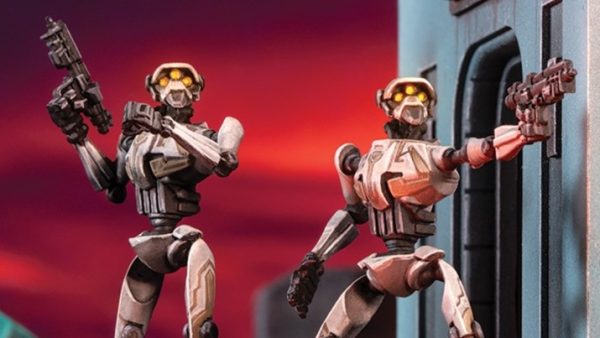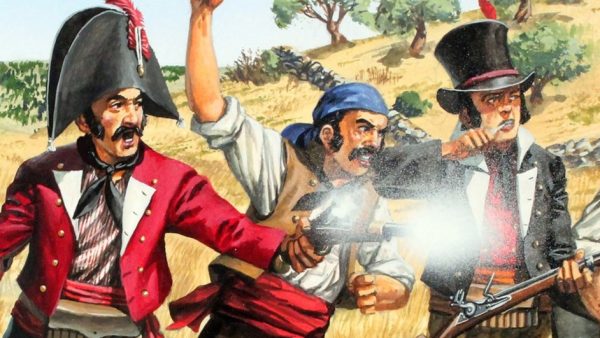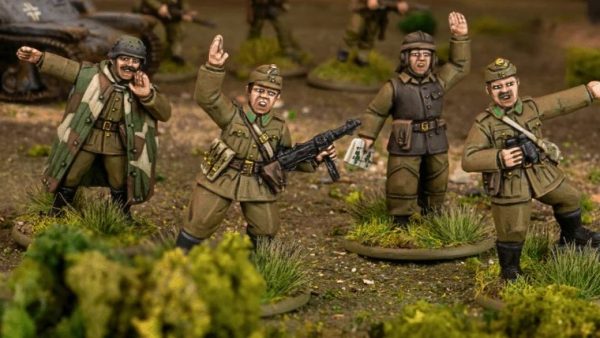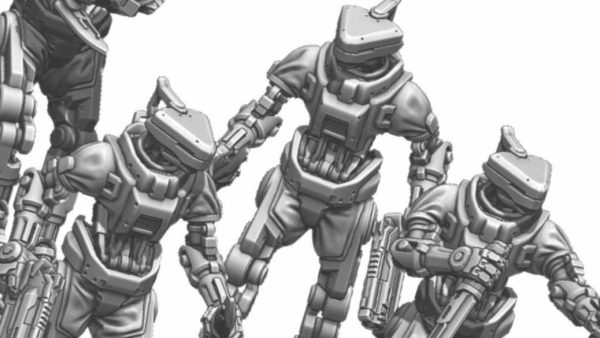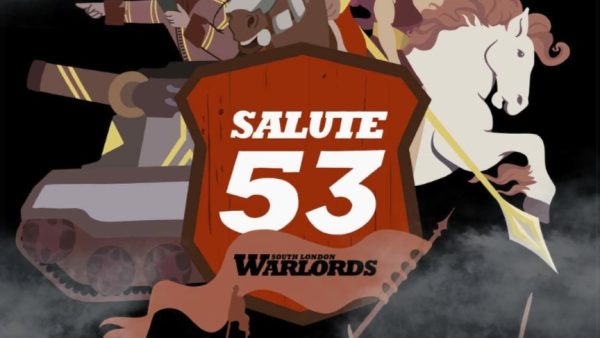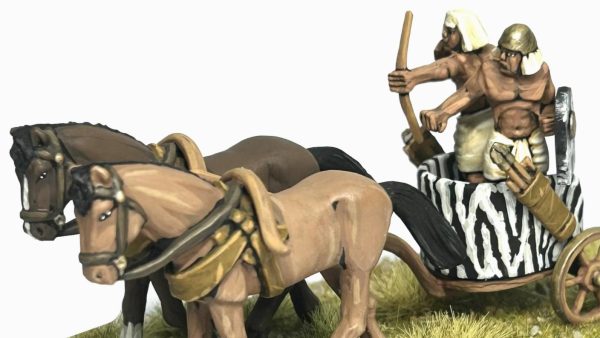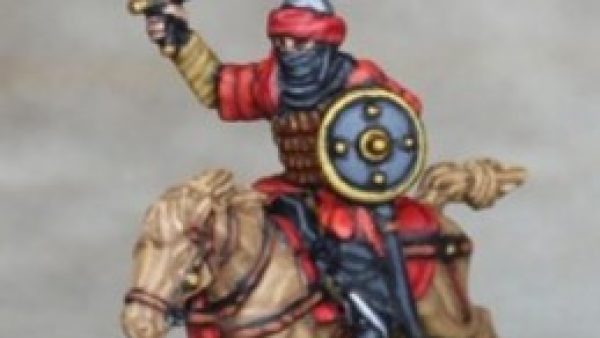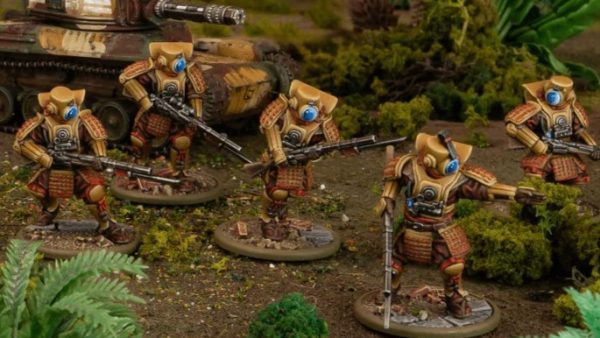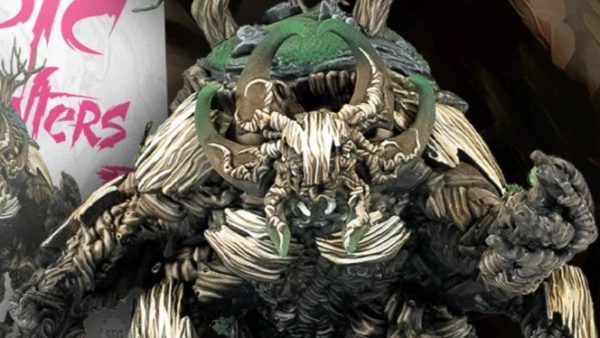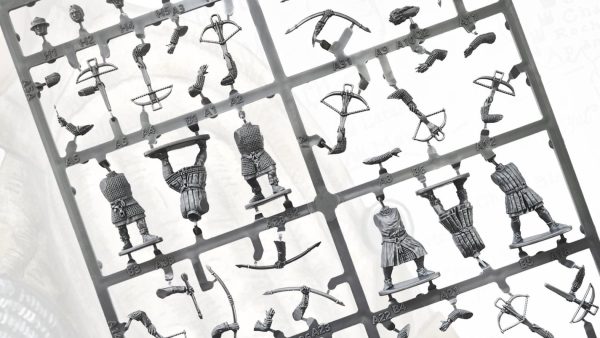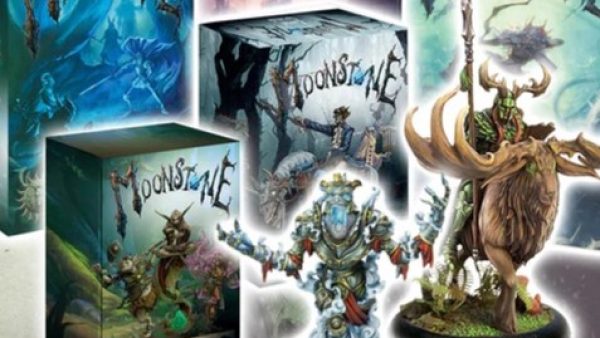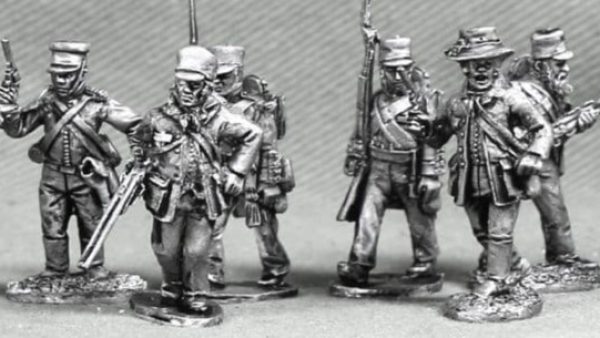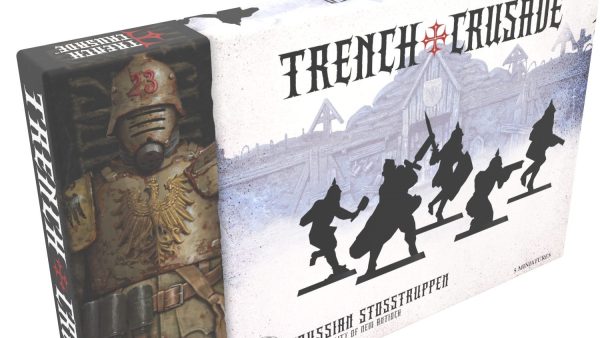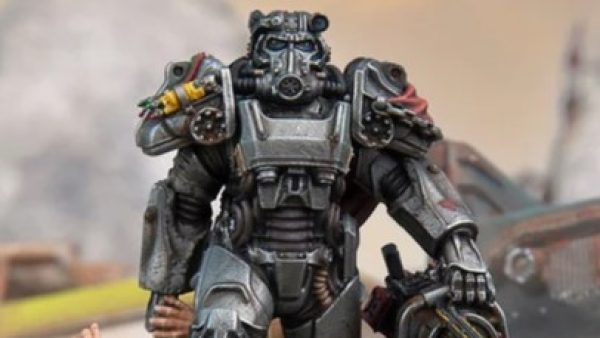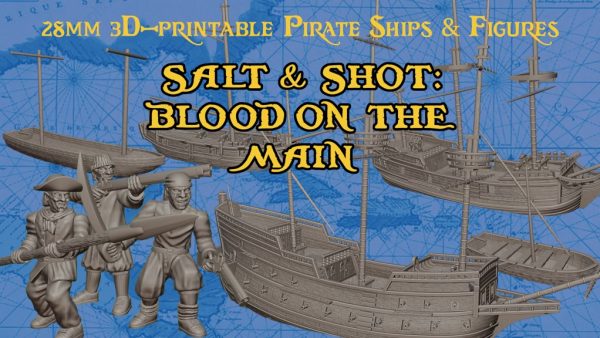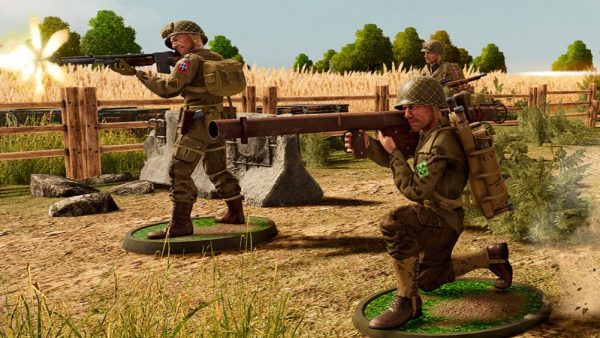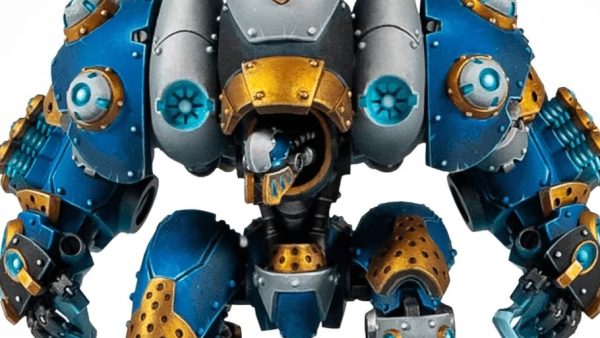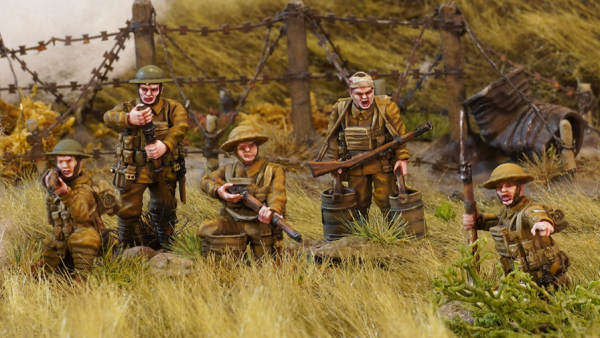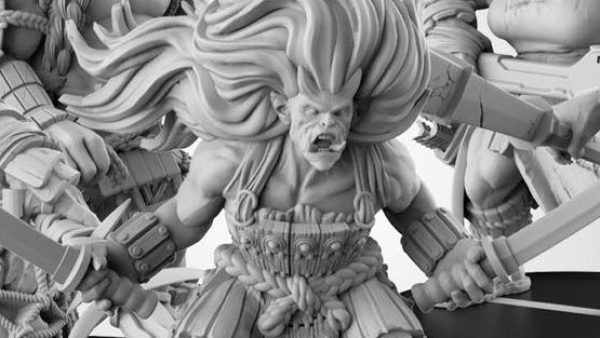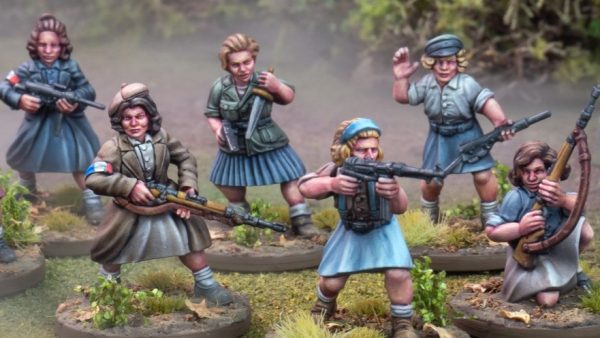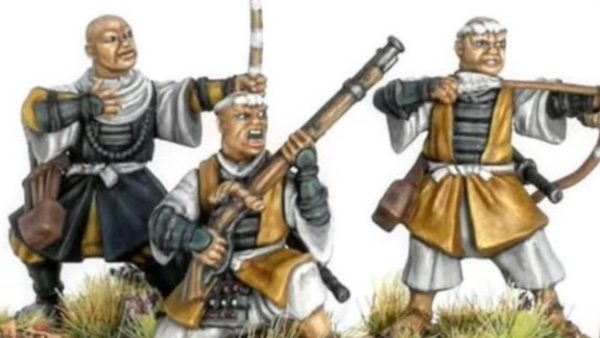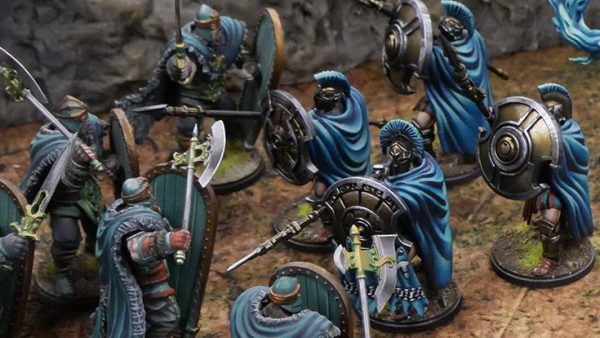
SAGA: Ages of Ages
Recommendations: 446
About the Project
As each "Age of ..." book comes out I get excited, make lists and put minis together to play. My imagination and wallet go much faster than my paintbrush but here is a record of how I've been getting on keeping up with Saga.
Related Game: SAGA
Related Company: Studio Tomahawk
Related Genre: Historical
This Project is Active
English finished.
I finally got these done. In the game the English have an ability which allows them to errect a barrier of stakes that is a medium ruler long. I therefore needed to model this and bought a couple of Perry Agincort range packs, one of stakes and one of archers preparing defences. Here are the finished archers and their stakes:
Here is the base of the archers preparing their defences. The game doesn’t need this but I thought it looked cool. You can see in the closeup that I’ve managed to replicate the wet, muddy ground basing I did on the men-at-arms.
Finally we have the warlord base. This is Henry V himself, by Copplestone Castings with an archer and some supplies from the Perry pack. I’m pleased with the shiny armour effect. I tried to up it a notch with some AK paint pens as a final highlight. Not sure that worked too well but overall there are a lot of shiny bits so I’m happy.
Age of Chivalry - English Men at Arms
When the new Saga Age of Chivalry book came out my friend and I got all excited and bought forces to play. He went for the Free Companies (boo!) and I decided I wanted to keep life simple so tried to find a box of plastics I could get a whole 6 point army out of. I tried to work something around the Perry Mercenaries box but couldn’t figure anything out. The French look like an easy faction but they would take at least 2 Perry boxes to do. Then I spotted their Agincort English box. This has 12 Men at Arms and 24 Archers. In Saga Terms that is:
3x 4 man Hearthguard (Fielded as 2 Units of 6 and therefore only generating 2 Saga dice) costing 3 Points
3x 8 man Archer Warrior units (generating 3 Saga dice) costing 3 points
So with a Warlord that’s the whole 6 point force sorted.
Perry box was bought and assembled in time for the test game. Then they sat around for a bit on the workbench when I got half way through because my friend’s models looked better as his metallics were so shiny. I found out his secret (Darkstar Molten Metals) and experimented with a new approach which I’m happy with so here are the Men at Arms:
The banners are in the information sheet that comes with the kit. I went for a simple Cross of St George and then the banner of Henry V. This is because I bought the Copplestone Henry V to use as my Warlord.
I tried to add some mud and trampled grass as the basing scheme. I used gloss varnish to try to get them looking wet. Difficult to see in photographs but it looks okay:
Mamertine Warriors and Hearthguard
The Mamertine infantry that made up the bulk of the force are not well described in the sources. Pottery depictions make it clear that fighters are hoplites armed with the long spear and round shield typical of this type, many were unarmoured wearing nothing or a chiton, others have Oscan style chest and back protectors. Therefore I’ve decided to split them into an 8 man Warrior unit and two 4 man Hearthguard units. This represents the general type of mercenary, possibly more recently arrived, as the Warriors. The Hearthguard are therefore those mercenaries who have been successful for longer in their trade and who show more trappings of wealth including better armour and fancier shields.
First the Warriors. Miniatures are made from several Victrix kits including unarmoured Samnites and Unarmoured Hoplites, some conversions done to provide hoplite spears rather than the usual javelin or sword. Painted initially in the same style and colours as before, there is then a white edge run around the bottom of the chiton tunic to give it a more Oscan style. Shiled transfers from LBMS as usual.
The Hearthguards are based on the Victrix Armoured Samnite bodies with conversions for the spear arms, and some heads taken from Republican Roman and Agema Roman kits. Painting used the same colour scheme as before but with further detailing. The white edging was taken further and quite a few have an additional line of red or blue overlaid onto the white. This brings them much closer to the Oscan fresco fighter depictions.
Hearthguard unit 1:
Heathguard unit 2:
Mercenaries - Samnite Warriors
A second Mercenary unit, this time Samnites. They have come to make their fortune in the war torn island and have thrown their lot in with their fellow Oscan speakers.
Miniatures are Victrix Armoured Samnites and the shields supplied with the kit have been used. Transfers as usual are LBMS. A slight change in use of colour here. I focussed on the minor complementary AP Speedpaint shades from the main scheme, that is the darker Poppy Red and the light blue Tidal Wave. The initial zenith undercoat was initially reinforced with a faily heavy overbrush of white onto the chitons. This gave a nice bright white for the overlaid colours which also gives a slight change of tone from the other units. This gives a suitably similar but different look.
Mercenaries - Greek Hoplites
The first mercenary unit. This faction will be using up to the maximum 50% of the force as mercenaries. Expensive but very tough are the Greek Hoplites. 2 points for 8 Hearthguard who benefit from the phalanx rule.
The miniatures are all 6 of the Lucid Eye Ziggurat Greek Mercenaries with 2 Wargames Foundry World of the Greeks miniatures. They match well as all were sculpted by Steve Saleh. Paint scheme follows that already established for this force. Shields were mostly Victrix plastic hoplon and transfers are from the Mercenary set for these sheilds by LMBS but only sold through Victix themselves.
Mamertine Foot Command
For completeness I like to create a foot command base as well so I have that option available. It is rare that I don’t prefer the additional movement of the mounted variant but in defensive scenarios this sometimes isn’t useful.
Here we have the Samnite/Italian Tribes characters by Fighting Hedgehog for Clash of Spears. The standard is made from some brass rod and a plastic icon from a Warlord Games Roman set. Other than that this is how they come, including the shields whose transfers are LBMS again. I had to pick from a range of sets to find the ones that fit the best.
Mamertine Tyrant
The army commander is a mounted tryant with his accompanying standard bearer. The standard bearer’s shield features the Trinacria (Gk: triskelion), the three-legged symbol of Sicily (LBMS 1/72nd again). Although dubbed a tryant this didn’t carry the same negative conotation of its current use in English. Tyrant (Gk: tyrannos) was just the word for the ruler of a polis.
The general is from Crusader Miniatures, his standard bearer and delightfully armoured horse are both Redoubt Enterprises with a small conversion to add extra feathers taken from a Victrix sprue. A Warlord Games Cesarean bull icon was used to form the banner along with some greenstuff streamers.
Mamertine mounted warriors
The plains of Campania were apparently good horse breeding territory and I imagine that if our mercenaries did well they would want to take to battle on a trusty steed. Models here are Agema Etruscans for the commander and standard bearer who has a minor conversion to carry a Victrix Samnite banner. The others are some mostly good sculpts by Redoubt Enterprises, the odd one is showing their age a bit but as a group they look fine.
Painting for horses is as straightforward as with the warriors, speedpaints over zenithed undercoat. Chestnut is the most common colour with bay (chestnut with black mane and tail) also very common in many breeds so a range of reddish browns is useful. Speedpaints feature Hardened Leather, Ruddy Fur and Burnished Red. I steer clear of mid-brown which is an unusual colour for a horse, they never quite look right. Black is popular for modern sports horses so leaders tend to get those for leaders and I’ve a soft spot for coloureds (paint horses for the Americans) so usually go for skewbald (chestnut and white, sometimes with some black in mane and tail). This pattern is painted on with standard acrylics – it is very hard to get a firm edge to the colours when using speedpaints.
These small shields meant I needed to use LBMS 1/72nd scale transfers.































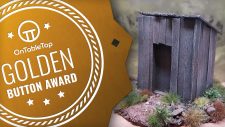

![Very Cool! Make Your Own Star Wars: Legion Imperial Agent & Officer | Review [7 Days Early Access]](https://images.beastsofwar.com/2025/12/Star-Wars-Imperial-Agent-_-Officer-coverimage-V3-225-127.jpg)







